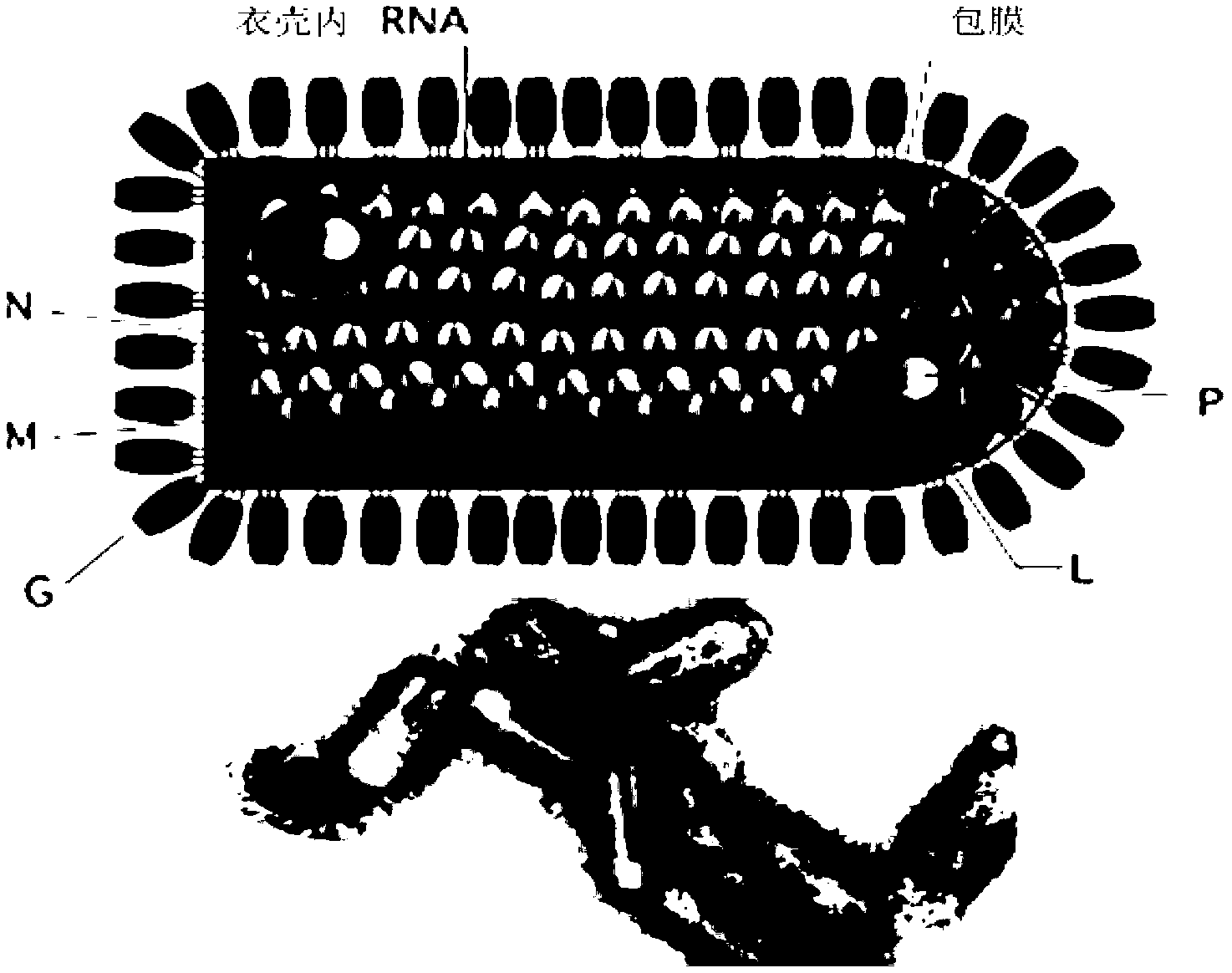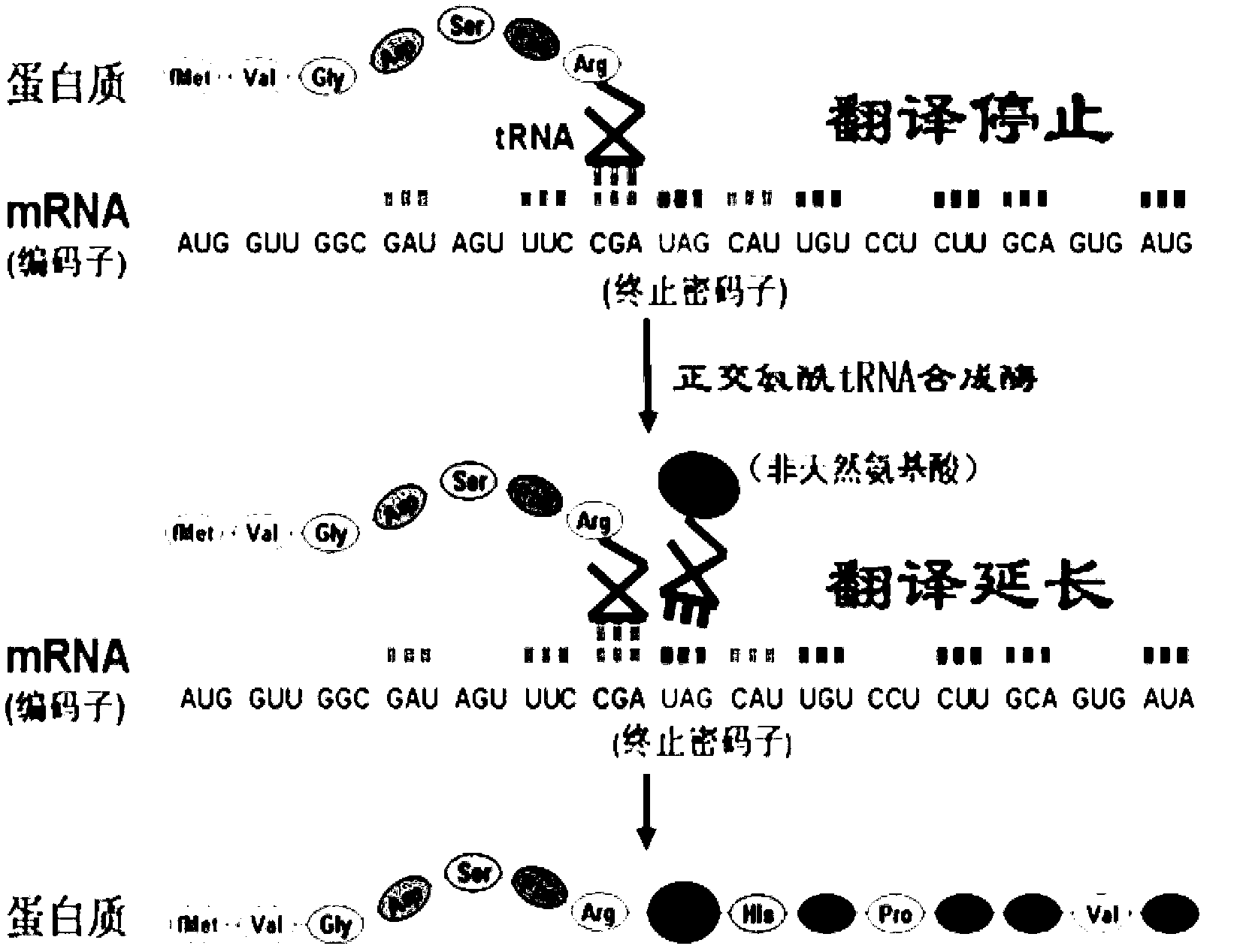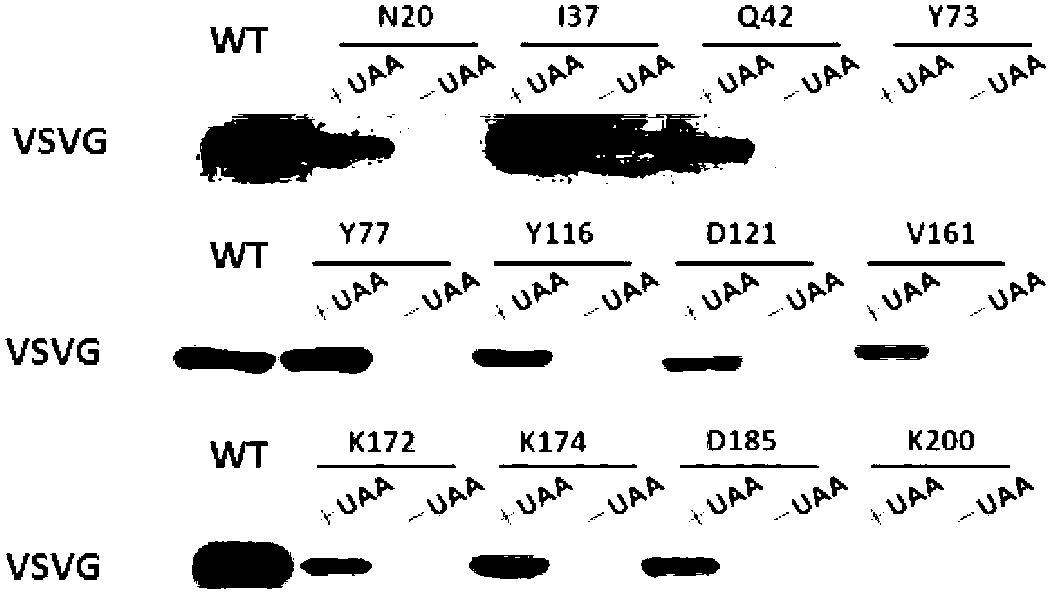Viromembrane protein with site-specific mutagenesis and site-specific decoration, preparation method and applications of viromembrane protein
A technology of site-directed mutagenesis and protein, which is applied in peptide preparation methods, chemical instruments and methods, botanical equipment and methods, etc., can solve the problems of ineffective research on weak and transient protein interactions between viruses and hosts, To achieve the effect of avoiding dissociation
- Summary
- Abstract
- Description
- Claims
- Application Information
AI Technical Summary
Problems solved by technology
Method used
Image
Examples
preparation example
[0080] Synthesis and identification of unnatural amino acid DiZPK (Lys-diazirine)
[0081] The chemical synthesis reaction formula of unnatural amino acid DiZPK is as follows.
[0082]
[0083] As shown in the above formula, 15mL of raw material 1 (5-hydroxy-2-pentanone) and 40mL of liquid ammonia were stirred and reacted at -40°C for 5h, then cooled to -60°C, and NH 2 OSO 3 H (20g) in methanol solution was added to room temperature and reacted overnight. The precipitate was filtered off, triethylamine was added to the supernatant, and I was slowly added under ice-bath conditions. 2 , until the color of the reaction solution becomes darker and no more bubbles are generated. After the reaction was complete, the solvent was evaporated, extracted with ether and dried. Diethyl ether was distilled off, and the remaining liquid was distilled under reduced pressure to obtain 25.4 g of product 2 as a colorless viscous liquid.
[0084] The above product 2 was dissolved in pyr...
Embodiment 1
[0088] Example 1: Construction of site-directed mutation of vesicular stomatitis virus envelope glycoprotein expression plasmid
[0089] (1) Mutation site selection
[0090] According to the three-dimensional crystal structure and hydrophobicity analysis of the VSV G protein, the inventors selected 24 sites, because one of the most important structural features of the protein interaction interface, there are some key residues on the interface in the protein interaction It plays a more important role than other residues, and the key amino acid residues are usually: W, Y, I, D, P, and there are 4 Y residues and 2 W residues in the mutation site selected by the present invention , 2 I residues, 3 D residues, 1 P residue. The information of the specific mutation site is as follows, where the amino acid position refers to the position on the sequence shown in SEQ ID NO:1.
[0091] Table 1. Mutation sites
[0092]
[0093]
[0094] Mutation Primer Design
[0095] In order ...
Embodiment 2
[0103] Example 2: Construction of a site-directed mutagenesis plasmid for vesicular stomatitis virus envelope glycoprotein marked with a Flag tag
[0104] The flag tag is a peptide segment of 8 amino acid residues, the sequence is: AspTyrLysAspAspAspAspLys (SEQ ID NO: 47), it is a soluble protein tag, and it is a tag designed for immunoaffinity chromatography analysis. The protein bound to the solid phase through Flag can be eluted in a non-denaturing way, for example, using Flag small peptide to elute the bound protein. Currently, there is a commercial Flag purification method. In order to facilitate the purification or capture of the subsequent site-directed mutant protein, the present invention first introduces a TAG codon into the base sequence of the wild-type VSV G according to Example 1, and then introduces a TAG codon at the C-terminal of the VSV G protein. Add the Flag tag. Specific steps are as follows:
[0105] (1) Amplification primer design:
[0106] Design for...
PUM
| Property | Measurement | Unit |
|---|---|---|
| Molecular weight | aaaaa | aaaaa |
| Molecular weight | aaaaa | aaaaa |
| Molecular weight | aaaaa | aaaaa |
Abstract
Description
Claims
Application Information
 Login to View More
Login to View More - R&D
- Intellectual Property
- Life Sciences
- Materials
- Tech Scout
- Unparalleled Data Quality
- Higher Quality Content
- 60% Fewer Hallucinations
Browse by: Latest US Patents, China's latest patents, Technical Efficacy Thesaurus, Application Domain, Technology Topic, Popular Technical Reports.
© 2025 PatSnap. All rights reserved.Legal|Privacy policy|Modern Slavery Act Transparency Statement|Sitemap|About US| Contact US: help@patsnap.com



